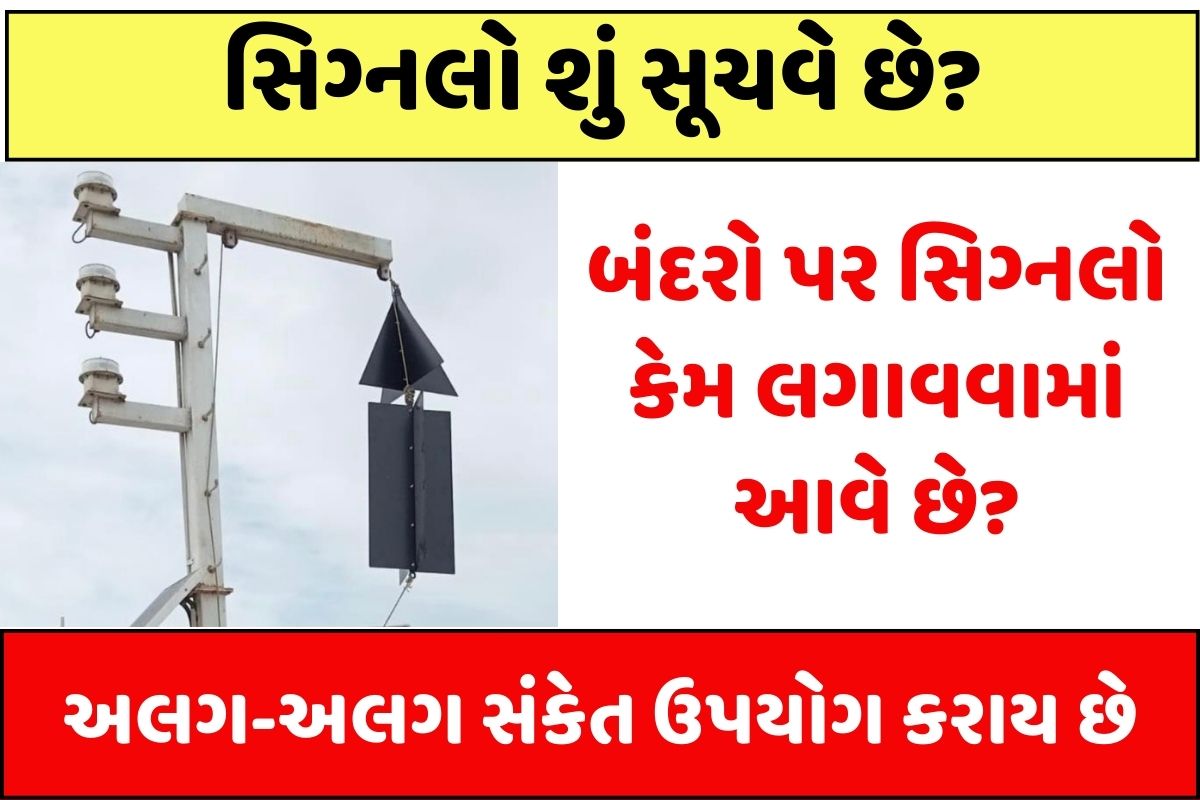Why are signals installed at ports? Know which signal is applied when :- In our country different signals are used for both day and night to give danger signal. A cylindrical shaped object and a cone are used to signal during the day while white and red lights are used to signal at night. Signals from number 1 to number 11 are used in India.
Exploring the Meaning of Signals at Port | Port signals
Harbor signals, numbered 1 through 12, are strategically placed on harbors to indicate the intensity of an approaching storm or the strength of winds near the coast. These signals serve as a critical communication tool for boat operators, steamers and ships navigating the sea, enabling them to assess roughness of the sea and potential hazards associated with egress.
Why are different signals installed at ports? Know what these signals mean?
The main reason for installing different types of signals at the port is that all the information about the frequent storms like hurricanes can reach the public. Alerts are given offshore by People are warned by these signals.
How many types of signals are there in total?
There are a total of 11 types of signals, depending on the speed of the storm and the forecast of rain, these signals are given in different types.
Signal No-01: Light condition
When the wind speed is between one and five kilometers per hour, a signal containing the number 1 is displayed. This signal indicates relatively mild weather conditions, posing minimal risk to mariners.
Signal No-02: Wind speed is slightly high
A wind speed of 6 to 12 kilometers per hour guarantees the display of signal number 2. This signal alerts sailors to a slight increase in wind intensity.
Signal No-03: Moderate strong wind
When the wind speed is between 13 and 20 kilometers per hour, signal number 3 is hoisted. This signal indicates the presence of moderately strong winds in the area.
Signal No-04: Wind intensity is increasing
At a wind speed of 21 to 29 kilometers per hour along the coast, signal number 4 is raised, indicating a significant increase in wind intensity.
Signal No-05: Significant wind speed
When the wind speed reaches 30 to 39 kilometers per hour, signal number 5 is clearly displayed at the port. This signal serves as a warning about the presence of significant wind force.
Signal Number-06: Dangerous situation
A sea breeze of 40 to 49 kilometers per hour is signaled to display signal number 6. This signal is considered dangerous and requires more caution.
Signal No-07: Strong wind speed
When the wind speed is between 50 and 61 kilometers per hour, signal number 7 is raised. This signal warns mariners of increased wind strength in the area.
Signal Number-08: Warning of impending danger
When the wind speed is between 62 and 74 kilometers per hour at sea or on the coast, signal number 8 is displayed. This sign indicates a significant level of fear.
Signal No-09: Severe thunderstorm condition
When the wind speed reaches 75 to 88 kilometers per hour, signal number 9 is displayed. This signal indicates the presence of strong gale-force winds.
Signal Number-10: Extremely Dangerous Weather
Signal number 10 is displayed when the wind speed is more than 89 kmph but does not exceed 102 kmph. This signal indicates extremely dangerous weather conditions.
Signal No-11: Gale-Force Winds
Gale-force winds of 103 to 118 kilometers per hour signal signal number 11 at the port. This signal warns mariners of the presence of severe weather conditions.
Signal No-12: Very dangerous storm
When the wind speed intensifies in the range of 119 to 220 kilometers per hour, a high-danger signal, number 12, is hoisted on the port side. This signal serves as a clear warning of life-threatening conditions.
Signals at port play a crucial role in maritime safety by conveying important information about prevailing weather conditions. The numerical code assigned to these signals corresponds to a specific wind speed range, enabling mariners to assess the intensity of a storm or storm. By understanding the meaning behind each signal number, sailors can make informed decisions regarding their ventures at sea, ensuring the safety of themselves and their vessels. These signals must be respected and obeyed, as they serve as a lifeline in the safety of life at sea.
